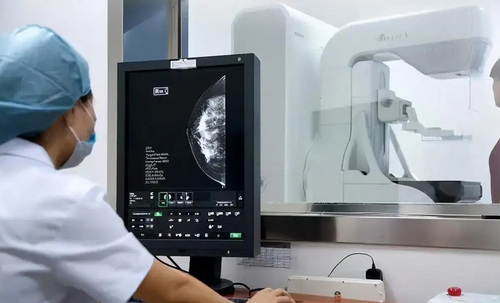You are here: home > Technology > Long COVID and Chronic Fatigue Syndrome Have A Lot In Common
Product (89)
- Intermediates (15)
- Apis (23)
- Formulations (22)
- Reagent (29)
Factory Tour (1)
Technology (10)
News (10)
Qaulity Control (2)
Certificates (2)
International Exhibitions (2)
Contact Detail (1)
Credit Report
Products Index
Company Info
NINGBO OUMAN PHARM CO LTD [China (Mainland)]
Business Type:Manufacturer
City: Ningbo
Province/State: Zhejiang
Country/Region: China (Mainland)
Technology
Long COVID and Chronic Fatigue Syndrome Have A Lot In Common


Long COVID and Chronic Fatigue Syndrome Have A Lot In Common
Evidence is emerging that long COVID (formally "post-acute sequelae SARS-CoV-2 infection," or PASC) bears a striking, molecular-level resemblance to the disabling and complex illness now known as myalgic encephalomyelitis/chronic fatigue syndrome (ME/CFS). One key difference is that long COVID has one causal agent, the SARS-CoV-2 virus, while ME/CFS has multiple potential sources, says Warren Tate, emeritus professor in the department of biochemistry at the University of Otago (New Zealand) who has been studying both post-viral disorders.
The similarities between long COVID and ME/CFS are particularly intriguing to Tate, whose daughter's health dramatically deteriorated more than 30 years ago after a bout of glandular fever, commonly known in the United States as the Epstein-Barr virus and best known for causing mononucleosis. With every viral illness, including the flu, "a forgotten minority population" experiences lingering physical, cognitive, emotional, and neurological difficulties long after they have fought off the infection, he says.
COVID-19 has been an unexpected game-changer in that it has put post-viral syndromes on the radar of clinicians and scientists, bringing attention and resources to the study and treatment of PASC, continues Tate. Long COVID is thought to impact as much as 30% of the population infected by SARS-CoV-2, threatening to produce a secondary pandemic.
Tate says he is hopeful progress will be made in not only ameliorating the symptoms of long COVID but finding a way to reverse the condition and get the brain functioning normally again. Less certain is whether research to that end will extend to ME/CFS.
"In New Zealand, we've got 25,000 people with ME/CFS and at the moment the number with long COVID is probably in the low thousands," he points out. "I am trying to get our national [health] authorities to include ME/CFS with the long COVID initiatives they all want to take [and]... there is a bit of a reluctance about that because [some] people don't want to dilute all that attention by worrying about everything that has gone before."
In the U.S., Tate's position is being advocated by Solve M.E., a nonprofit organization interested in alleviating the suffering of individuals with various "long haul" diseases. The critical issue is not the disease or syndrome, he says, but people whose immune systems are engineered such that they are more sensitive to viral infections, toxic chemicals, and surgery than the rest of the population.
Relapse/Recovery Cycle
The body normally mounts a defense against infection that includes transient inflammation followed by healing. But people with post-viral syndrome remain in a chronic state of inflammation that causes symptoms such as loss of sleep and cognitive function, hypersensitivity to sound and light, and widely fluctuating blood sugar levels—all of which are under brain-derived homeostatic control, notes Tate.
The body normally mounts a defense against infection that includes transient inflammation followed by healing. But people with post-viral syndrome remain in a chronic state of inflammation that causes symptoms such as loss of sleep and cognitive function, hypersensitivity to sound and light, and widely fluctuating blood sugar levels—all of which are under brain-derived homeostatic control, notes Tate.
Three years ago, in an article appearing in the International Journal of Immunopathology and Pharmacology (DOI: 10.1177/2058738418812342), Tate and his then-Ph.D. student Angus MacKay first proposed that neuroinflammation in the brain is a central feature of ME/CFS and facilitates the frequent more severe relapses of the illness in response to stress. Newly emerging evidence finds widespread neuroinflammation is also seen in patients with long COVID.
Tate and his colleagues most recently explored communication to the brain from the peripheral nervous system in both ME/CFS and long COVID and found a fluctuating pattern of inflammation that causes the brain to function abnormally, as reported in Frontiers of Neurology (DOI: 10.3389/fneur.2022.877772). Their hypothesis is that the brain effects are sustained by the initial stressor event and the systemic pathology moves to the brain via the neurovascular pathways or through a dysfunctional blood-brain barrier, sustaining illness with chronic cycles of relapse and recovery and no real healing.
The theory holds that the cluster of neurons within the paraventricular nucleus, which are responsible for processing stress, are dysfunctional because of the neuroinflammation, Tate says. In impacted individuals, otherwise mundane aggravations (e.g., driving in a rainstorm) are regarded as dangers requiring the overproduction of hormones such as serotonin that can loosen the barrier the brain has from the rest of the body.
The affected population may well extend beyond long COVID and well recognized post-viral fatigue syndromes, says Tate. Inflammatory biomarkers have been found in the cerebrospinal fluid of patients with multiple sclerosis, for example, a disease characterized by flare-ups with periods of remission that parallel what has been seen with infections with the Epstein-Barr virus.
It is likely that long COVID will also prove to have some unique features, notably the development of microclots as suggested in an article appearing recently in The Biochemical Journal, (DOI: 10.1042/BCJ20220016). The theory is that the microclots block up capillaries and that is what underpins most of the symptoms, including fatigue, "brain fog," and inflammation.
Pre Page:
Factory equipment



